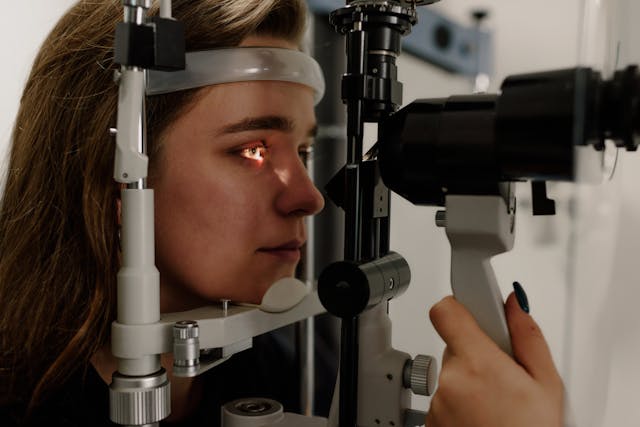Myopia Treatment - A Global Perspective on Trends and Practices
In today's dynamic realm of eye care, myopia treatment emerges as a pivotal force, shaping the visual landscape for millions worldwide. With a global surge in myopia rates, the need to grasp diverse treatment methodologies grows ever more pressing. Beyond mere vision correction, myopia treatment embodies a fusion of scientific advancements, cultural adaptations, and individualized patient preferences. As myopia's pervasive impact spans billions, delving into the latest treatment trends promises not just hope but illuminating insights into the future of ocular health.As the prevalence of myopia surges globally, particularly among younger populations in East Asia, the urgency to innovate treatment approaches intensifies. Recent studies suggest that by 2050, half of the world's population might be myopic, highlighting the critical need for scalable and effective solutions. Understanding regional disparities in myopia rates and treatment outcomes becomes paramount in addressing this burgeoning public health concern.Beyond the biological implications, myopia's rise signifies a broader societal shift towards increased screen time and sedentary lifestyles. Could our digital habits be accelerating myopia rates? Exploring the interplay between technological advancements and ocular health reveals complex narratives where innovation and unintended consequences collide. This prompts deeper reflections on balancing progress with proactive health measures.In the realm of myopia treatment, patient education and empowerment emerge as pillars of effective care. Empowering individuals with knowledge about preventive measures and treatment options fosters a sense of control amidst uncertainty. From lifestyle adjustments to advanced optical technologies, every step towards clearer vision is a testament to the collaborative effort between patients, caregivers, and healthcare providers.
Reflecting on the evolution of myopia treatment reveals a fascinating journey through medical history. From ancient remedies to modern surgical interventions, each era has contributed to our current understanding of ocular health. Contrasting traditional methods with contemporary innovations underscores the transformative impact of scientific progress on improving visual outcomes and quality of life.
Reflecting on the evolution of myopia treatment reveals a fascinating journey through medical history. From ancient remedies to modern surgical interventions, each era has contributed to our current understanding of ocular health. Contrasting traditional methods with contemporary innovations underscores the transformative impact of scientific progress on improving visual outcomes and quality of life.Myopia's impact extends beyond clinical settings into classrooms and workplaces, where visual acuity directly correlates with educational and occupational success. Promoting eye health literacy among educators and employers fosters environments conducive to optimal vision and performance. By integrating vision screenings into routine health assessments, institutions empower individuals to achieve their full potential without visual impediments.
Amidst discussions on myopia prevention, the role of outdoor time and sunlight exposure emerges as a compelling area of research and intervention. Numerous studies have suggested a protective effect of natural light against myopia development, particularly during childhood and adolescence. Exposure to outdoor environments, with ample natural light and distant visual stimuli, appears to support healthy eye development and reduce the risk of myopia onset.
Eye exercises have emerged as a popular adjunct to traditional treatments for managing myopia and promoting overall eye health. These exercises are designed to alleviate strain, strengthen eye muscles, and improve focusing ability, all of which are beneficial for individuals with myopia. Similarly, vision therapy programs tailored by optometrists or ophthalmologists may include activities like convergence exercises and eye tracking drills to address specific vision issues associated with myopia. The 20-20-20 rule is another simple yet effective practice: every 20 minutes, take a 20-second break to look at an object at least 20 feet away, which helps prevent eye fatigue and maintain visual comfort, especially during prolonged near work.
While scientific evidence on the direct impact of eye exercises on myopia progression is still evolving, these practices are widely recognized for their potential benefits in reducing eye strain and improving overall visual wellness. Integrating regular eye exercises into daily routines alongside other preventive measures, such as spending time outdoors and proper screen habits, supports a holistic approach to managing myopia. By empowering individuals with tools to enhance eye muscle strength and flexibility, eye exercises contribute to proactive eye care strategies and may complement traditional treatments like corrective lenses or orthokeratology. Ongoing research into the effectiveness of different exercise techniques continues to shed light on their role in optimizing visual health and mitigating the impact of myopia over time.
Myopia is a widespread eye condition influenced by both genetic and environmental factors. While its exact prevention methods remain unclear, early detection and appropriate management can mitigate its impact on visual acuity and associated complications. Continued research into prevention and treatment strategies is crucial to addressing the growing global burden of myopia.

